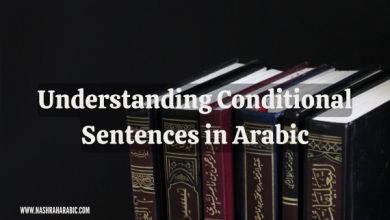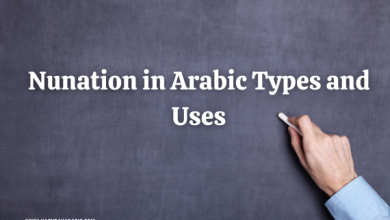Arabic morphology, or “sarf” (صرف), is a cornerstone of Arabic linguistics, providing the framework for understanding how words are formed and modified in the language. This system is based on a complex interplay of root letters and patterns, allowing for a rich and nuanced expression of meaning. In this article, we will explore the key aspects of Arabic morphology, its rules and processes, and its practical applications in the study and use of the Arabic language.

The Root and Pattern System
At the heart of Arabic morphology lies the root-and-pattern system, a highly systematic method for word formation. The root, typically consisting of three consonants, carries the core semantic meaning. These roots can be thought of as the DNA of the language, from which all word forms are derived. For example, the root “k-t-b” relates to writing and can generate various related words:
– كتب (kataba): He wrote
– كاتب (katib): Writer
– كتاب (kitab): Book
The patterns, on the other hand, are templates into which the roots are inserted. These patterns inflect the root meaning with specific grammatical and semantic features. For example, the pattern “fa’il” denotes the doer of an action, while “maf’ul” indicates the object of an action. Thus, the root “k-t-b” can be placed into different patterns to produce:
– كاتب (katib): Writer (fa’il pattern)
– مكتوب (maktub): Written (maf’ul pattern)
Verb Conjugation
Arabic verbs are conjugated to reflect tense, mood, aspect, person, gender, and number. The primary tenses are the perfect (completed action) and imperfect (ongoing or future action). Additionally, verbs can be modified to indicate different moods such as the indicative, subjunctive, and jussive. Here is how the verb “to write” (كتب) is conjugated in the perfect tense:
– كتبتُ (katabtu): I wrote
– كتبنا (katabna): We wrote
– كتبَ (kataba): He wrote
– كتبتْ (katabat): She wrote
In the imperfect tense, the same root can produce forms like:
– أكتب (aktubu): I write
– نكتب (naktubu): We write
– يكتب (yaktubu): He writes
– تكتب (taktubu): She writes

Derived Forms of Verbs
Arabic verbs can also undergo derivation to create a variety of forms that convey different nuances of the base meaning. These derived forms are numbered from I to X, with each form adding a specific semantic layer. For example:
– Form I (fa’ala): Basic form, e.g., كتب (kataba) – to write
– Form II (fa’ala): Causative or intensive, e.g., كتب (kattaba) – to make someone write
– Form III (fa’ala): Associative or reciprocal, e.g., كاتب (kataba) – to correspond
– Form IV (af’ala): Causative, e.g., أكتب (aktaba) – to dictate
– Form V (tafa’ala): Reflexive of Form II, e.g., تكتب (takattaba) – to correspond with oneself
– Form VI (tafa’ala): Reflexive of Form III, e.g., تقاتل (taqatala) – to fight each other
Noun Formation
Arabic nouns are also formed using a root-and-pattern system similar to verbs. Nouns can be derived to indicate a wide range of meanings, such as professions, places, instruments, and more. For example:
– مكتب (maktab): Office (place where writing happens)
– كاتب (katib): Writer (person who writes)
– كتابة (kitaba): Writing (act of writing)
– مكتوب (maktub): Written (something that is written)
There are specific patterns for nouns that follow the same principles as verbs, with some patterns indicating particular types of nouns such as active participles, passive participles, and verbal nouns.
Irregular Forms
In addition to the regular patterns, Arabic morphology also includes a set of rules for dealing with irregular forms. These irregularities arise from certain root consonants, such as weak radicals (waw, ya), doubled radicals, or the presence of hamza. These cases require specific morphophonemic rules to ensure correct conjugation and noun formation. For example:
– Weak Verbs: Verbs with a weak radical may undergo significant changes. For instance, the verb “to sleep” (نام) from the root “n-w-m” drops the weak consonant “waw” in certain forms.
– Doubled Verbs: Verbs with doubled radicals (like “madda” from the root “m-d-d”) have their own set of rules to handle the repetition of the consonant.
– Hamza Verbs: Verbs containing the hamza (glottal stop) undergo specific changes to maintain phonological harmony. For instance, the verb “to read” (قرأ) may change in conjugation forms to maintain ease of pronunciation.
Practical Application and Learning
Mastering Arabic morphology is crucial for both native speakers and learners of the language. It not only enhances comprehension but also improves expressive abilities. Practical application involves regular practice in reading, writing, and recognizing patterns in word formation. Tools such as morphological analyzers and educational software can aid in this learning process.
One effective method for learning Arabic morphology is through the use of morphological charts and tables, which help visualize the patterns and transformations of roots into various forms. For example, a table for the root “k-t-b” can show all the derived verbs and nouns, aiding in memorization and understanding.
Conclusion
Arabic morphology is a rich and intricate system that offers deep insights into the structure and meaning of the language. By understanding the root-and-pattern system, verb conjugations, derived forms, noun formation, and irregularities, learners can gain a comprehensive grasp of how Arabic words are constructed and used. This understanding not only facilitates better communication but also enriches one’s appreciation of the linguistic beauty and complexity of Arabic. With dedication and practice, mastering Arabic morphology can unlock the full expressive potential of the language.




